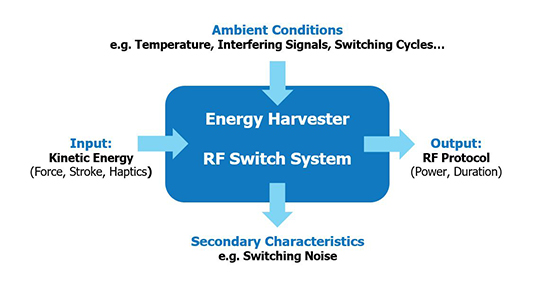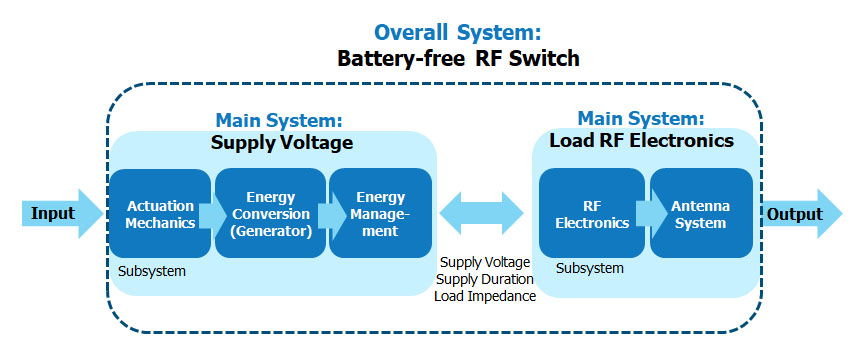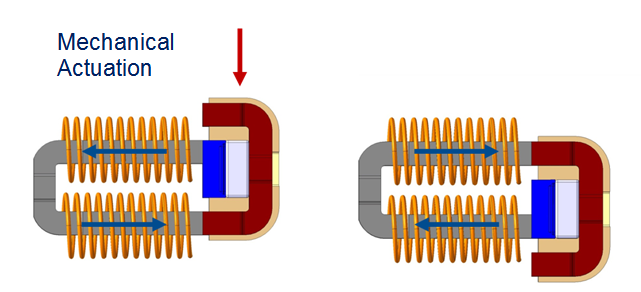Energy Harvesting can be described as an ‘operation without any auxiliary energy’, as the energy is generated from the surrounding environment and then converted.
ZF uses the inductive principle, meaning that the required RF energy is created by the mechanical actuation of a switch mechanism. Instead of generating auxiliary energy through an integrated energy source or adding it via an external energy supply, kinetic energy that is acting on the system is converted. Therefore an Energy Harvester generally speaking is an energy converter.
The RF data is then transmitted wirelessly via RF technology. The advantages of the system are that the switch can be placed anywhere without the need for any wires. Over its whole life cycle it will fulfill its function completely maintenance free and without any need to replace a battery, which means significantly reduced maintenance costs. The RF switch is fed with different input parameters and is capable of reacting to its environment.

Structurewise, the overall system with its four main parameters can be divided into two main systems: The supply voltage & the load RF-electronics – these can then be grouped into five sub-systems as you see in the diagram below.

Through suitable deflections the operating mechanism is transferring the actuation of the switch into the required force, path and direction of the energy converter.
ZF has designed an inductive energy converter consisting of an electromagnetic generator which changes the magnetic flux in the coils by a sudden movement of a magnet, creating an electric impulse through the actuation of the wireless switch module.

The electrical energy is then temporarily stored by the energy management unit and then converted, as low-loss as possible, into a predefined supply voltage by a voltage converter unit. This supply voltage powers the RF electronics of the consumer device which sends the radio protocol with all user data via the antenna system to a receiver.
The energy harvesting wireless RF switch system from ZF can be operated with the frequencies 868 MHz, 915 MHz and 2,4 GHz. For the transmission of the switching information a proprietary and customer-specific protocol can be used but also RF-standards such as KNX-RF, EnOcean 3.0 or Bluetooth Low Energy 5.0.

The presented energy harvesting technology leads to several advantages and revolutionized existing systems in various application fields.
SYSTEM ADVANTAGES:
No wires
• Freedom in Design – flexibility for inaccessible locations
• Strongly reduced efforts – no complex wire assembly
No batteries
• Maintenance-free – no batteries need to be changed
• No battery disposal and waste – Increasing sustainability
• High energy efficiency – no additional energy source necessary
• Long mechanical life – up to 1.000.000 switching cycles
Compact design
• Tiny geometries – promotes Design-In into applications with limited space
Full system integration
• Flexible “Pairing” – allows the operation of several receivers with one switch (and vice versa)
• Unique IDs – exclude a mutual interference between different RF-switches and specific control of different functions
• Network compatibility – Use of standard protocols like KNX, EnOcean3.0, BLE5.0 or ZigBee Green Power
For further information about RF Standards click here






